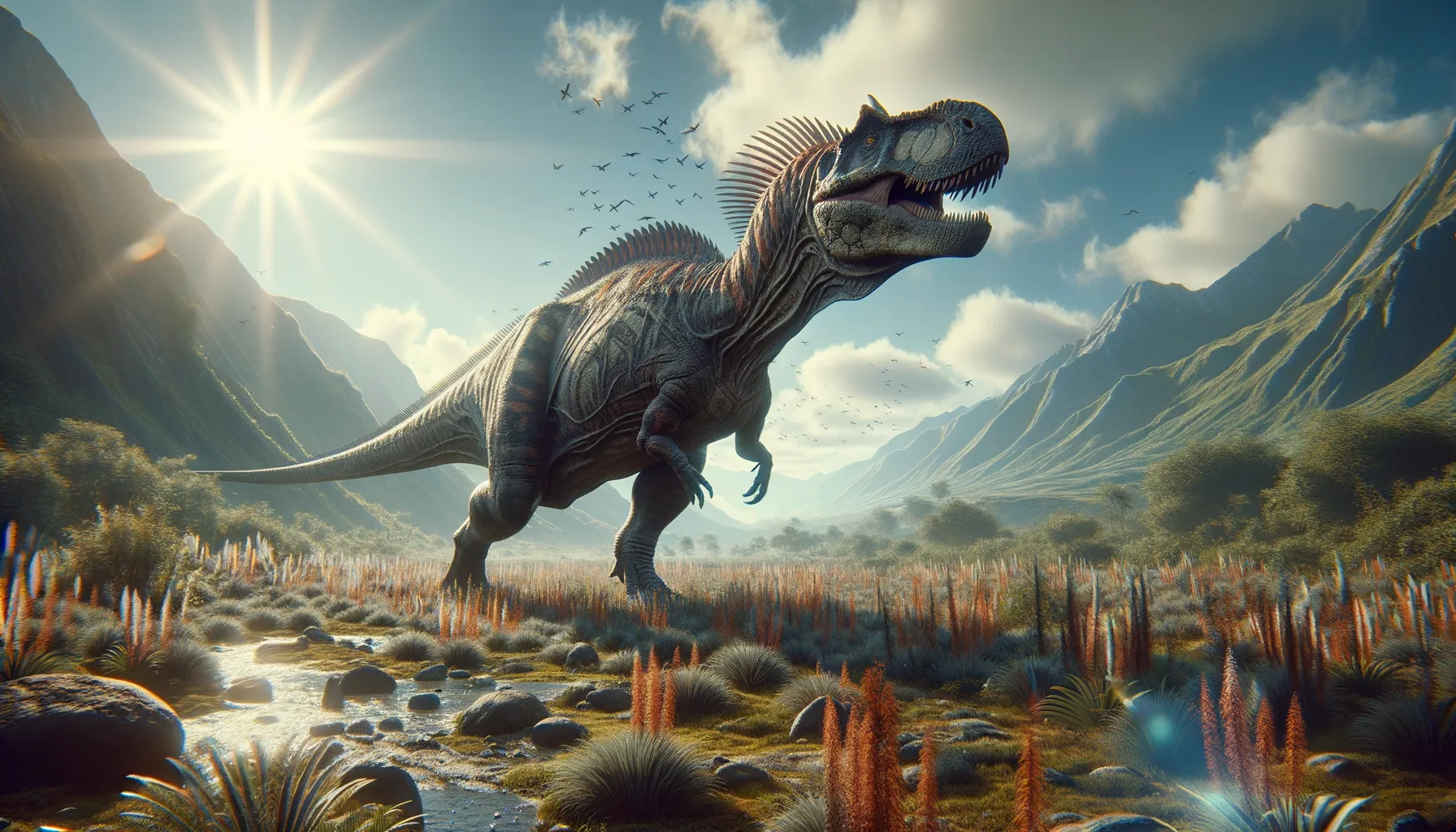
Tatankacephalus
A formidable fortress on four legs.
Period
Cretaceous
Length
About 6 meters in length.
Height
Roughly 1.5 meters tall.
Weight
Approximately 2,000 kg.
Tatankacephalus was an armored dinosaur known for its thick bony plates and clubbed tail, making it a formidable herbivore of its time. It roamed the Late Cretaceous period, using its tough exterior to protect against predators. The dense arrangement of its armor suggests it needed strong defense mechanisms to survive in a world filled with large carnivorous dinosaurs.
Diet
Tatankacephalus was a herbivore, feeding on low-lying plants and shrubs. Its broad, leaf-shaped teeth were adapted for grinding vegetation efficiently.
Hunting
As a herbivore, Tatankacephalus did not hunt other animals but focused on foraging for plants. Its primary concern would have been to avoid predators rather than engage in hunting.
Environmental challenges
Tatankacephalus faced challenges from large predatory dinosaurs of the Cretaceous period, such as Tyrannosaurus. Its heavy armor helped deter attacks, but finding enough food in dry seasons could have posed a threat. Climate changes towards the end of the Cretaceous period may have contributed to its extinction.
Speed
Tatankacephalus was likely slow-moving due to its heavy armor.
Lifespan
The lifespan of Tatankacephalus is not precisely known but was estimated to be several decades.
First discovery
Discovered in 2003 in the Hell Creek Formation, Montana, USA.
Fun Facts
- Tatankacephalus was a herbivorous dinosaur that lived during the Early Cretaceous period.
- The name 'Tatankacephalus' means 'Bison Head' due to its large, bony skull.
- Tatankacephalus belonged to the ankylosaur family, known for their armored bodies and club-like tails.
- This dinosaur was discovered in the Cloverly Formation in what is now Wyoming, USA.
- Tatankacephalus had a distinctive horn on its snout and bony eyelids for extra protection.
- Unlike some ankylosaurs with large tail clubs, Tatankacephalus had a smaller, less developed tail weapon.
- Fossil evidence of Tatankacephalus helps scientists understand the evolution of ankylosaur armor and defenses.
Growth and Development
Tatankacephalus would have hatched from large eggs, growing steadily over the years to reach its imposing size. Juveniles might have been more vulnerable to predators until their armor fully developed. Like many herbivores, they probably grew quickly to increase their chances of survival.
Habitat
Tatankacephalus inhabited areas with dense vegetation, which offered plenty of food and cover from predators. It thrived in forested regions or near water sources that provided ample plant material. Its environment was diverse, with various climates and landscapes over time.
Interaction with other species
Tatankacephalus likely lived alongside other herbivorous dinosaurs, sometimes competing for food resources. It would have been a key figure in its ecosystem, contributing to the plant life cycle. Predatory species might have been deterred by its formidable defenses, altering their hunting strategies.
Natural lifespan
Tatankacephalus likely had a natural lifespan extending over several decades if not preyed upon.
Reproduction
Like many dinosaurs, Tatankacephalus reproduced by laying eggs, which were likely buried or hidden beneath vegetation for protection. Parental care after hatching is uncertain, though hatchlings were at risk until developing substantial armor.
Social behaviour
Tatankacephalus may have been a solitary creature or lived in small, loosely connected groups. Its interactions were likely centered on grazing together or responding to threats collectively by using their combined armor.
Fossil locations
Fossils of Tatankacephalus have been found primarily in North America, particularly in the Hell Creek Formation in Montana. This region is known for its Late Cretaceous deposits, providing rich fossil records of various dinosaur species.
